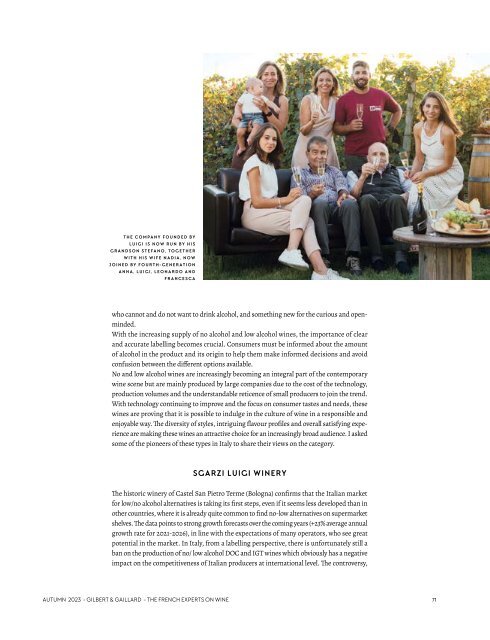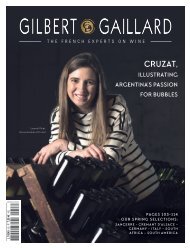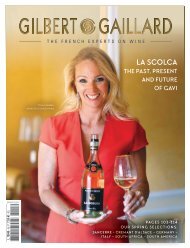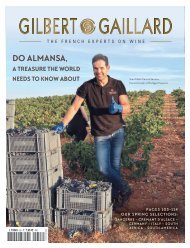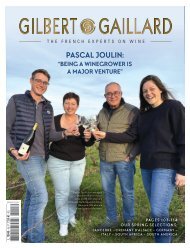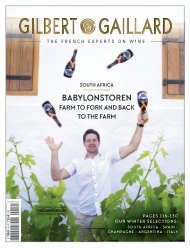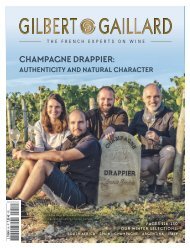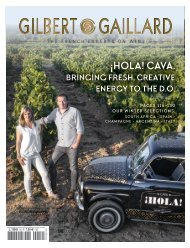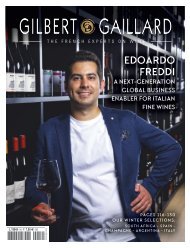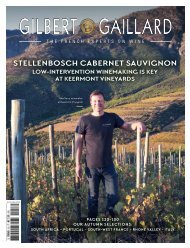Create successful ePaper yourself
Turn your PDF publications into a flip-book with our unique Google optimized e-Paper software.
THE COMPANY FOUNDED BY<br />
LUIGI IS NOW RUN BY HIS<br />
GRANDSON STEFANO, TOGETHER<br />
WITH HIS WIFE NADIA, NOW<br />
JOINED BY FOURTH-GENERATION<br />
ANNA, LUIGI, LEONARDO AND<br />
<strong>FRA</strong>NCESCA<br />
who cannot and do not want to drink alcohol, and something new for the curious and openminded.<br />
With the increasing supply of no alcohol and low alcohol wines, the importance of clear<br />
and accurate labelling becomes crucial. Consumers must be informed about the amount<br />
of alcohol in the product and its origin to help them make informed decisions and avoid<br />
confusion between the different options available.<br />
No and low alcohol wines are increasingly becoming an integral part of the contemporary<br />
wine scene but are mainly produced by large companies due to the cost of the technology,<br />
production volumes and the understandable reticence of small producers to join the trend.<br />
With technology continuing to improve and the focus on consumer tastes and needs, these<br />
wines are proving that it is possible to indulge in the culture of wine in a responsible and<br />
enjoyable way. The diversity of styles, intriguing flavour profiles and overall satisfying experience<br />
are making these wines an attractive choice for an increasingly broad audience. I asked<br />
some of the pioneers of these types in Italy to share their views on the category.<br />
SGARZI LUIGI WINERY<br />
The historic winery of Castel San Pietro Terme (Bologna) confirms that the Italian market<br />
for low/no alcohol alternatives is taking its first steps, even if it seems less developed than in<br />
other countries, where it is already quite common to find no-low alternatives on supermarket<br />
shelves. The data points to strong growth forecasts over the coming years (+23% average annual<br />
growth rate for 2021-2026), in line with the expectations of many operators, who see great<br />
potential in the market. In Italy, from a labelling perspective, there is unfortunately still a<br />
ban on the production of no/ low alcohol DOC and IGT wines which obviously has a negative<br />
impact on the competitiveness of Italian producers at international level. The controversy,<br />
AUTUMN 2023 • GILBERT & GAILLARD - THE FRENCH EXPERTS ON WINE<br />
71


